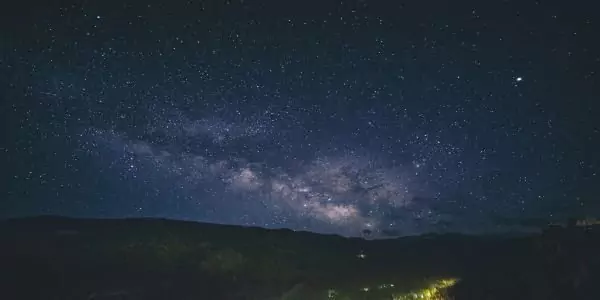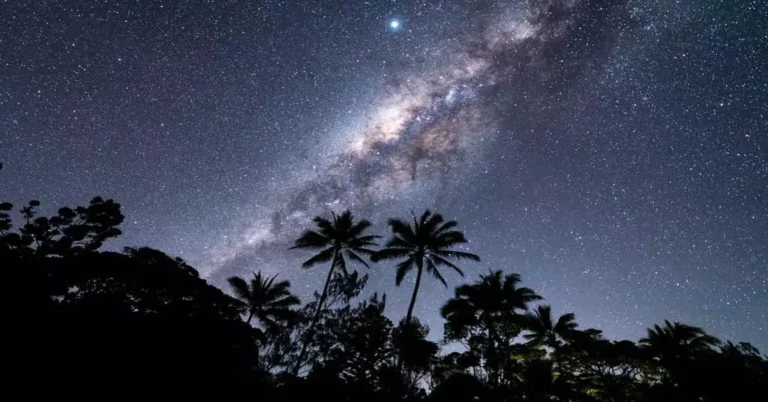A Beginner’s Guide to Astrophotography with a Telescope
The night sky has always fascinated people. The stars shining up there make us think about what’s beyond our planet. With just your eyes, you can’t see everything out there. But using a telescope and taking pictures is like opening a door to a whole new world. It’s like turning a regular person who likes looking at the stars into someone who wants to learn more about space.
The Night Sky with a Telescope
A telescope is like your magic key to a universe full of amazing things. Looking through it, you can see so much more than just stars.
- Constellations: You can find constellations, like Orion or the Great Bear, and see the stories behind them. Imagine yourself as an ancient explorer, peering into the night sky and seeing the heroes and creatures of old mythology come to life among the stars. It’s like connecting with our ancestors and hearing their tales about the heavens above.
- The Moon: When you focus on the Moon, you’ll see all its craters and plains, like a world of mysteries waiting to be explored. As the Moon waxes and wanes each night, it’s like watching a story unfold in the sky, with shadows dancing across its surface and revealing new secrets with each passing phase. You might even catch a glimpse of the mountains casting long shadows under the harsh glare of the sun, transporting you to a lunar landscape that’s both familiar and alien at the same time.
- Planets: When you look at planets through a telescope, they become like tiny worlds of their own. Saturn’s rings, shimmering in the sunlight, look almost too perfect to be real, while Jupiter’s Great Red Spot swirls like a cosmic storm raging for centuries. As you look at the bright colours of gas giants like Neptune, it’s like watching a beautiful painting come to life before you.
- Deep Sky Objects: The real adventure begins when you aim your telescope farther into the depths of space. There, you’ll discover even more wonders, like colourful nebulae and distant galaxies, each a testament to the beauty and majesty of the cosmos. It’s like taking a journey through space and time without ever leaving your backyard as you witness stars’ birthplaces and death throes, their stories across the cosmos. So, grab your telescope and let your imagination soar as you explore the universe’s wonders that lie beyond your reach.
Camera Bodies and Lenses: Capturing the Cosmos
Astrophotography is the way to go when you want to take pictures of stars and planets. It lets you capture these amazing sights and share them with everyone. When picking a camera for astrophotography, two important things to consider are how steady it is and how well it works in low light. Cameras that let you change lenses, like DSLRs or mirrorless ones, give you the most options. You’ll want a lens with a wide aperture (f/2.8 or lower) to let in as much light as possible, especially for those faint objects.
Additional Equipment for Astrophotography
To make the most of your astrophotography, you’ll need some extra gear:
Remote Shutter Release: This handy tool helps prevent your camera from shaking while taking long-exposure shots. It also lets you take a picture without touching the camera, which is important for getting clear images.
Intervalometer: An intervalometer automatically takes a bunch of pictures in a row. This is super useful for stacking, combining multiple images to make a clear picture. It’s a great way to improve the quality of your astrophotography.
Headlamp: When you’re out in the dark trying to take pictures of the night sky, a headlamp with a red light setting is a lifesaver. It helps you see where you’re going without ruining your night vision, which is important when looking at faint objects in the sky.
Choosing a High-Quality Telescope
When choosing a telescope, it’s important to consider what you want to see and how much you can spend. Here are some things to keep in mind:
- Aperture: The telescope’s main lens or mirror size is called the aperture. The bigger it is, the more light the telescope will gather, allowing it to see fainter objects in the sky.
- Focal Length: “The focal length determines how much the light entering a camera lens is refracted, which affects the size and orientation of the captured image. A shorter focal length gives you a larger view, which is great for catching big things like constellations or comets. But if you want to see details on planets or deep-sky objects, you’ll need a longer focal length for higher magnification.
- Telescope Mount: How the telescope is mounted is important for keeping it steady. Equatorial mounts move in sync with the rotation of the Earth, so you don’t have to adjust them as much to keep objects in view. Alt-azimuth mounts are simpler but need more frequent adjusting.
- Eyepieces: You look through these to see things in your telescope. Different eyepieces give you various magnification levels, so you can choose the one that’s best for what you’re looking at.
Tips for Successful Night Sky Exploration

Escape Light Pollution: City lights can make it hard to see the stars. To get the best view, find a spot away from bright lights. Websites like lightpollutionmap can help you find places with less light pollution so you can enjoy the night sky without interference.
Let Your Eyes Adjust: When you first go outside at night, give your eyes time to get used to the darkness. It takes about 20 to 30 minutes for your eyes to adjust fully, and once they do, you’ll be able to see fainter objects in the sky more clearly.
Star Charts and Apps: Use a star chart or a mobile app to help you find specific objects in the night sky. These tools can show you where to look for stars, planets, and other celestial wonders, making it easier to spot them with your telescope.
Stabilize Your Telescope: For the clearest views through your telescope, make sure it’s set up properly. A sturdy mount is essential so your telescope stays still while looking through it. Ensure your tripod is level and your telescope is attached so you can focus on the universe’s wonders without distractions.
Conclusion
The universe is calling, full of amazing things for you to discover. With a telescope, you can start an exciting journey of exploring space. You’ll see stars being born and dying, galaxies far away, and stories written in the stars. Your telescope will take you on a trip through the endless depths of space, sparking a love for exploring the stars that will last a lifetime.
FAQs
What is the difference between astrophotography with a telescope and with a camera lens?
Telescopes offer magnification, allowing you to see fainter and more detailed celestial objects than a camera lens alone. Astrophotography with a telescope typically involves long exposures to capture enough light for these faint objects.
Is astrophotography difficult?
Astrophotography can be challenging, but with practice and the right equipment, you can capture stunning images. Many resources are available online and in libraries to help you get started.
What size telescope do I need for astrophotography?
The aperture (diameter of the primary lens) is key. Generally, a larger aperture gathers more light, allowing you to capture fainter objects. However, larger telescopes can be more expensive and difficult to manage.
What type of telescope mount is best for astrophotography?
Equatorial mounts are ideal for astrophotography because they help you track the movement of celestial objects across the night sky, minimizing the need for constant adjustments during long exposures.







